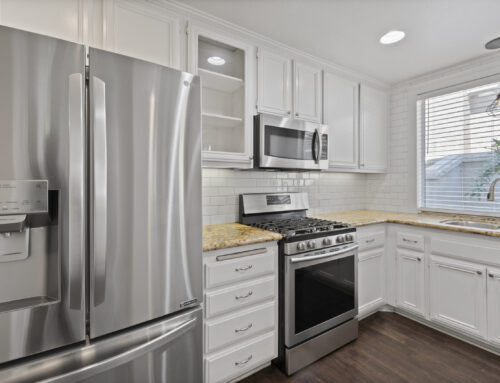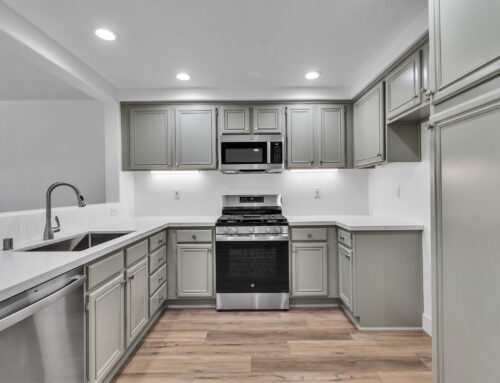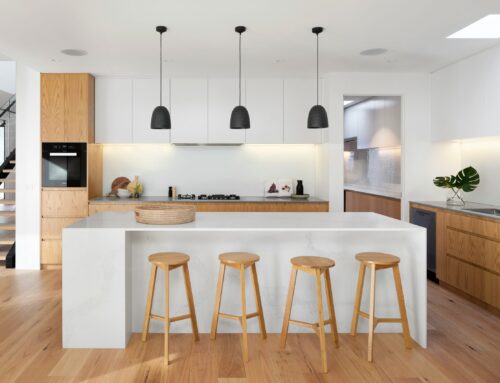Immediately after the election, interest rates climbed higher, pushing along the evolution of the Orange County housing market.
Presidential Impact: the immediate impact of the election results on housing is a bump in interest rates from 3.5% to 4%.
The evolution of the housing market is inevitable. Regardless of who takes office, the housing market will change over the next four years. Historically low interest rates at 3.5% could not last forever. The five year run in Orange County real estate that has resulted in a significant rise in home values cannot continue to outstrip the rise in local incomes. The unbelievably low, anemic housing inventory will someday climb beyond the long term average.
Before everybody gets too carried away, these changes will not happen overnight like the recent bump in interest rates. Yes, interest rates jumped from 3.5% to 4% in a week. But, that had more to do with way too much capital being parked in United States long term bonds, a “safe haven” for investors from around the world.
Economic experts are attempting to read the tea leaves to determine how the economy will unfold in the coming years under a new presidential administration. There is some uncertainty surrounding the upcoming differences between campaign promises and actual governing, where the rubber meets the road. There have already been some major compromises since election day. Nonetheless, significant changes are coming.
One of the biggest changes that will have a profound impact on most Americans is a tax cut, putting more dollars into consumers’ wallets. This coupled with the promise of fiscal stimulus has experts pointing to an increase in inflation. As a result, investors from around the world are preparing for a radically different presidential administration. Long term bonds were sold at a record pace and interest rates jumped from 3.5% to 4%, levels not seen since last January.
So, what does all of this mean for housing right here in Orange County? Let’s take a look at the impact on the rise in interest rates. Buyers locking their interest rates today, compared to prior to the election, are looking at paying an additional $161 per month for the median detached residential resale home at $710,000. That’s an increase from $2,551 per month prior to the presidential election to $2,712 today. Over a year, that’s an extra $1,932.

If the threat of inflation continues to climb after inauguration, long term rates could rise to 4.5%. The rise would probably be more gradual than the past couple of weeks. A rise to 4.5% would be an extra $327 per month compared to where rates were just prior to the election. That’s an additional $3,924 per year.
With a more vibrant economy, down the road we can expect interest rates to top out at 5%, historically still a very low rate. That’s nearly $500 per month more compared to the 3.5% interest rate, or almost $6,000 per year. For proper perspective, rates were at 10% in 1990, 8% in 2000, and 6.6% just prior to the Great Recession. At 6.6%, the monthly payment would be an extra $1,000 per month. Although interest rates will not increase to these levels, they are a great reminder of where rates have been and how great they are today.
So, a 4.5% rate doesn’t seem all that bad compared to history. As rates climb, affordability will be squeezed and the Orange County housing market could move from a seller’s market to equilibrium, a market that does not favor sellers or buyers. The active inventory would climb, adding more competition for sellers and more choices for buyers.
Do not get too carried away by anticipating a buyer’s market. The biggest reason there has not been a market favoring buyers for a long time is that homeowners are not moving as often as in the past, so the active inventory has been nothing short of anemic. Orange County homeowners are moving on average of once every 23 years. This ongoing trend started back in 2008 and has been repeated every year since. The active inventory needs to be sustainably above 8,000 homes for a long period of time before it tips in favor of the buyer. This year’s height was achieved in mid-July, 7,329 homes. Currently, there are 5,655 homes on the market, and, as is customary for this time of the year, the inventory will continue to fall until we ring in a New Year. The inventory on January 1, 2017, will be somewhere around 4,700 homes. To build a sustainable inventory above 8,000 homes will take some time and will not occur overnight. The last time the inventory was above the 8,000 mark for a sustainable long period of time was in 2011, five years ago.
It is important to note that nobody knows yet how the new presidential administration will truly unfold. It is mere speculation based upon gut feelings of what most likely will occur. Everybody will have to stay tuned. One thing is for certain, the Orange County housing market will eventually evolve and higher interest rates will be the catalyst of that evolution.
Luxury End: Luxury demand dropped by 5% as the inventory dropped by 3%.
In the past two weeks, demand for homes above $1 million decreased from 387 to 367 pending sales, a 5% drop, and its lowest level since February. The luxury home inventory dropped from 2,235 homes to 2,165, a 3% drop, its lowest level since April. With a larger drop in demand, the expected market time increased slightly from 173 days to 177 days for all homes priced above $1 million, just shy of six months.
For homes priced between $1 million to $1.5 million, the expected market time in the past couple of weeks decreased from 122 days to 118 days. For homes priced between $1.5 million to $2 million, the expected market time increased from 169 days to 174 days. For homes priced above $2 million, the expected market time rose from 281 days to 319 days. At 319 days, a seller is looking at placing their home in escrow around the start of October of next year, based upon today’s current activity and heightened competition.

Active Inventory: The active inventory is dropping rapidly, typical for this time of the year.
In the past couple of weeks, the active inventory dropped by 300 homes and now totals 5,655, its lowest level since March. That’s the second largest drop so far this year. Two weeks ago was the largest drop. In the past month, the inventory has shed 682 homes, 11%. The holidays are upon us and sellers know that this is the slowest time of the year for real estate activity. This cyclical drop will continue through the end of the year, picking up speed in December. Fewer homes come on the market and many unsuccessful sellers pull their homes off of the market completely.
Last year at this time there were 5,885 homes on the market, 4% more.
Demand: Demand dropped by 5% in the past couple of weeks.
Demand, the number of new pending sales over the prior month, decreased from 2,468 to 2,339, a drop of 129, or 5%. That’s the biggest drop for this time of the year in four years, the last time we had a presidential election. We can expect demand to continue to drop as we progress deeper into the holidays.
Last year at this time, there were 108 additional pending sales, totaling 2,447.
With a giant drop in both the active inventory and demand, the expected market time increased slightly from 72 days to 73 days, still a slight seller’s market.
Please feel free to contact me if you have any questions regarding the real estate market or the above information. I am always available for you and happy to help.






